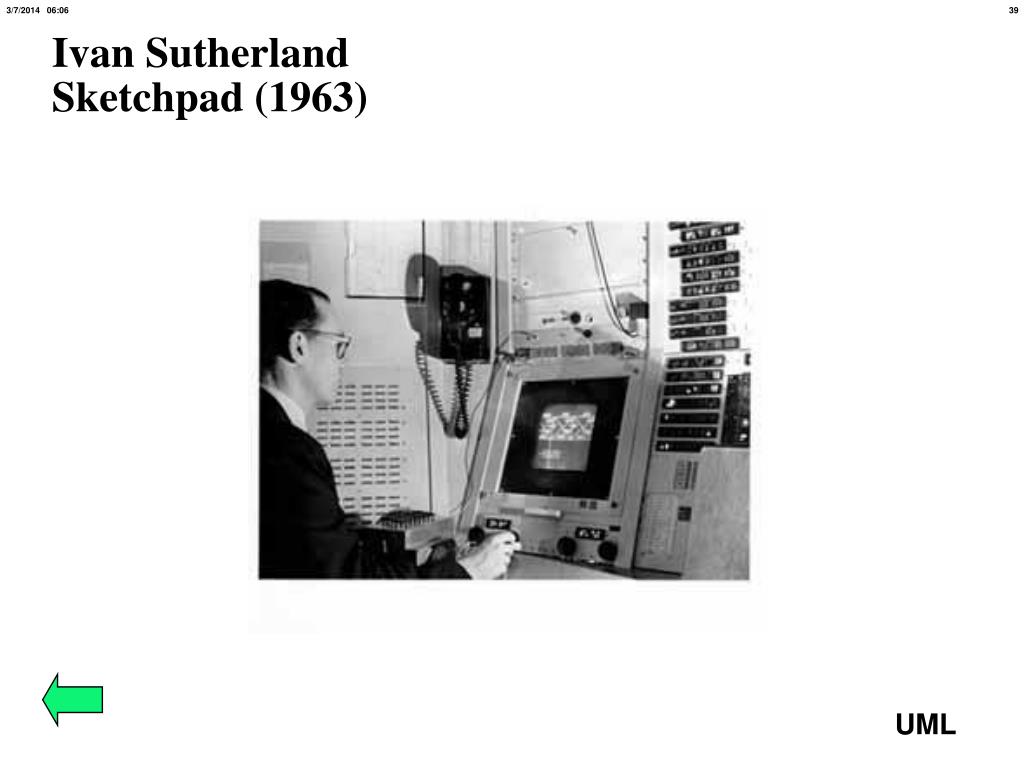

CPU constructs “virtual image” in System Memory.HornickĮarly graphics adapters Frame buffer CPU SystemMemory Scan Converter video, vga Pixel construction Bus Video Display Video graphics adapter Television monitor CS-321Dr.
Sketchpad 1962 serial#
Hornickġ200-9600 baud serial MOVE(ix,iy)DRAW(ix,iy)POINT(ix,iy)DASH(ix,iy,idash) CS-321Dr. host computer was used to draw the image once CS-321Dr.Much cheaper then a regular random scan system.Once a picture is drawn it stays until erased by putting a charge over all of the storage grid so that the electrons hit all of the screen (producing a green flash on a green screen monitor).Low speed electrons from the flood gun are attracted to the storage grid, and pass through the positively charge pattern spots (past the collector grid) to hit the screen.Primary electron gun draws the picture by knocking out electrons from the storage grid, producing a positively charged pattern.1/2 Human Computer Interface Introduction - Tutorialspoint Douglas Engelbart introduced the idea of programming toolkits (1963) Smaller systems created larger systems and components. COLOR(a)MOVE(ix,iy)DRAW(ix,iy)COLOR(b)DRAW(…) Development of the Sketchpad (1962) Ivan Sutherland developed Sketchpad and proved that computer can be used for more than data processing.HornickĮarly hi-performance displays Display Processor 1200-9600 baud serial Minicomputer Non-standard drive electronics CS-321Dr. Sketchpad: aplicación de dibujo online gratuita para todas las edades.Es stellte in Zeiten der spten Lochkartenrechner einen ersten Schritt in Richtung graphische Schnittstelle und CAD dar, nutzte bereits einen frhen Rhrenbildschirm und die gerade erfundenen Lichtgriffel. For the choice of instructions a little box with knobs stood beside the computers manual. Sketchpad ist ein Programm, das 1962 als Teil der Doktorarbeit von Ivan Sutherland am Massachusetts Institute of Technology (MIT) entstand. Then an analogue computer (Lincoln TX-2, since 1957) followed instructions to build either lines or circles between the points. Number of displayable vectors is finite 1) Ivan Sutherland presented 'Sketchpad' in 1962 in his dissertation: Points could be marked on a monitor.



 0 kommentar(er)
0 kommentar(er)
